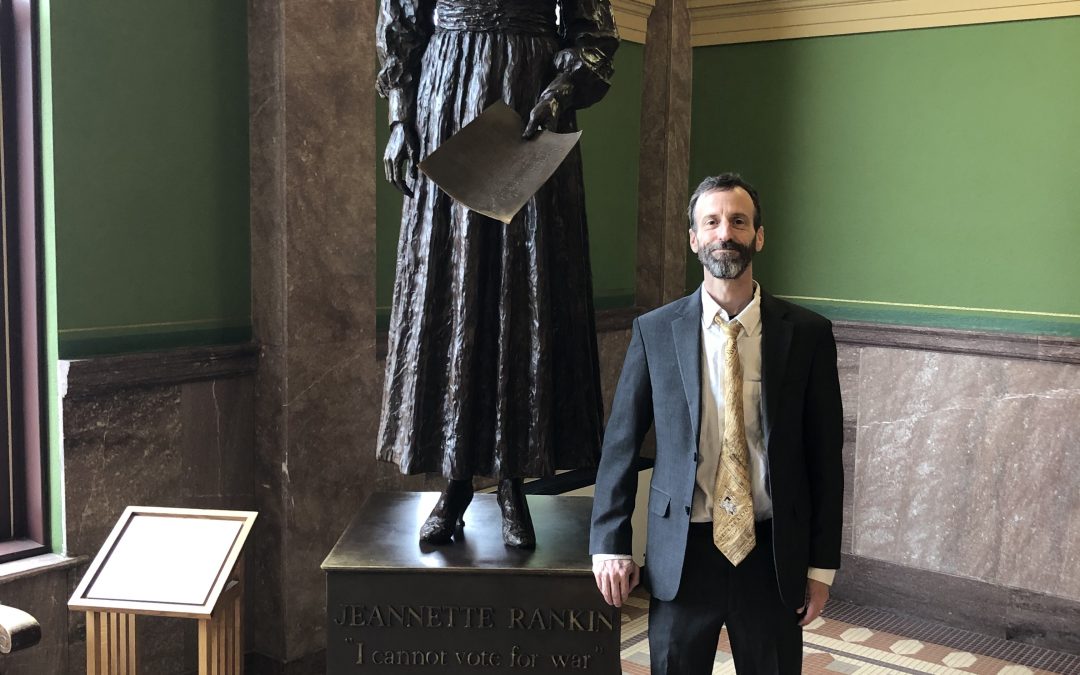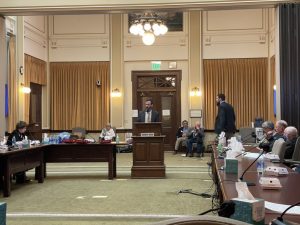GodArchy Podcast – Michael Maharrey
The History of Al-Qaeda – Keith Knight
And here’s the speech I gave last week in New Jersey. (I screwed up a few times in this one, but still.)
GodArchy Podcast – Michael Maharrey
The History of Al-Qaeda – Keith Knight
And here’s the speech I gave last week in New Jersey. (I screwed up a few times in this one, but still.)
I was turned on to the Netflix series “Black Mirror” a few months after the first season was released. If you started with Season 1, Episode 1 – “The National Anthem” – as I did, you instantly knew this was a different kind of show. The four seasons that followed have, for the most part, been good. There have been some “misses” but nothing’s gonna be perfect. Season 3, Episode 1 – “Nosedive” – which dropped on October 21, 2016 was not one of those “misses,” but, instead an instant favorite among fans. And now, only four years later, I would argue that the premise of the episode is quickly becoming reality.
For those that have not seen the episode or need a refresher, the premise of “Nosedive” is that social media’s system of approval has entered into real life. The “like” or ❤︎ response used to approve or disapprove of a post someone shares is now used to rate everyone according to their behavior, not just posts. Every interaction you have with another human can be rated and affects a social credit score that everyone can view. If you’re rude to the barista at the local coffee shop, he/she can ding you. And if your score lowers beyond a certain level, you begin to lose “privileges” such as your house in a “good” neighborhood or access to stores and transportation. Your score can even impact friends and family around you. You wouldn’t be able to have the proverbial “bad day” without risking your very livelihood. The overarching message here is that given this social pressure, society as a whole would improve as those who possess low scores would be shunned at all costs.
As odd and far-fetched as this all sounds, China has had something similar since 2009 which, I assume, is from where the writers of “Nosedive,” Rashida Jones and Michael Schur, drew their inspiration. But I’m going to make the argument that while most didn’t believe that could happen in the US, the last year has trained the US population for a system similar to that which is presented in “Nosedive.” When you consider that the “Karen” phenomenon isn’t even mentioned anymore, – because it’s been normalized – and that retail workers have been co-opted into law enforcement roles, (mask compliance, taking personal information if you are purchasing a money order) it is not conspiratorial to think that this is training us for a future system like the one laid out in “Nosedive.”
What better way for someone to be “mask compliant” than a random stranger “down-voting” them for wearing their mask below their nose. Or, how about getting too close to someone in the line to check luggage at the airport (when you’ll be sitting a foot apart on the plane?). It is easy for us to have this dystopian view of the future where the State is able to spy on us in a panopticon-like hell. I wonder how many have stopped to examine the last twelve months and wondered if it will be the everyday person next to us – the cashier in the grocery store, or our children living under the same roof that is going to hold more power over us than any politician could ever imagine.
As Stateless Productions enters the production phase of our new documentary, “America’s Police Crisis,” I can’t get the subject of police brutality out of my head. When people hear the term “police brutality,” depending on their background, they may start to question whether the issue is overblown. They tend to argue police are under extreme stress, have to make split second decisions and deal with the worst in society. However, was the suffocation of Eric Garner an accident? Was the execution of Daniel Shaver a mistake? Was the murder of Atatiana Jefferson through the window of her home just bad judgment? Was the killing of Botham Jean in his kitchen an oopsy?
Many like myself who study State monopoly policing will most likely discover an article from 2014 in which Conor Friedersdorf revealed that 40% of police households experience domestic violence, compared to 10% of the population. There is even further cause for alarm as personal interviews of police officers found even greater instances of officers admitting to injuring family members. What this shows is that domestic violence is 4X as likely to happen in the home of a law enforcement officer than in a normal domestic setting. That should make you question what the character of people who choose that profession is. It could also make one ponder what the career of law enforcement is doing to the minds of officers that causes domestic violence to be so prevalent.
The bigger, more important question may be, is the number actually higher? When abuse is experienced by the child or spouse of a police officer, to whom do they report it? The abusive spouse’s partner? His boss? And keep in mind, any incident included in the 40% study figure made it past the “thin blue line.” How much higher would that number actually be if the cases covered up or hushed were counted?
Leaving the 40% number behind you can be sure of one thing, after the information I provided in this piece, it is clear that you or I can be executed by law enforcement in its current incarnation while the courts, as well as at least half the country, will consider the murderers heroes who were “just doing their jobs.” We live in an age of madness where cops, in the heat of the moment, can “fear for their lives” and end yours for not obeying their orders, all because you may have a hearing problem, suffer autism, or just hesitate out of fear when having commands screamed at you at gunpoint. When you combine this knowledge with the events of the last twelve months, it is easy to believe we are living in a dystopian nightmare.

 Americans For Prosperity and Concerned Veterans of America had me out to give a talk to a committee of the Montana State Senate in Helena on Tuesday.
Americans For Prosperity and Concerned Veterans of America had me out to give a talk to a committee of the Montana State Senate in Helena on Tuesday.
Here is some of the audio. The first 15 minutes or so about how the corruption of the military industrial complex and the boom and bust caused by the pro-empire easy money policy is pushing American liberals toward socialism are unfortunately not included.
Podcast: Play in new window | Download
Biden bombs Syria. Mass shooters kill Asians in Atlanta and white people in Boulder. Connect the dots.
Go on, complain about rising gas prices. Whine about inflation. Jump up and down about transgender BS. Even if you believe Biden is calling the shots, so many people miss the point when it comes to the important issues.
If you’re a normie, at this moment in time, you believe Biden is in charge. Most of those who are making jokes about him falling “up” steps or dumping in his pants, generally believe he’s calling the shots. How do I know this? Because he’s the one you’re complaining about. None of your complaints are pointed at the corporate academic or journalist class who come up with the policies. No, you point at Biden. But you are always so far off target with your criticism.
Wouldn’t a better plan of attack on Biden involve foreign policy? If Trump was too much of a hot head to command the “nuclear football,” why wouldn’t you be complaining about an incontinent, proven warmonger having control over it? And what about the wars that are ongoing? Is he mentally competent to handle them? Or are you defaulting to trusting the experts at the Pentagon? You know, the un-elected bureaucrats who run things for every president? The ones you like to call the “Deep State.”
So, we have another president, likely illegitimate even by statists standards, and the most important issue concerning government is all but ignored. This is like being in Game 7 of the World Series and keeping a 25-game winning pitcher who’s had 4 days rest on the bench to instead go with the number 4 in your rotation. It makes no sense. Ignoring the one issue, war, that is crucial to the life and death of the entire planet proves how well the aforementioned members of the corporate press and academia have succeeded in “educating” you. The ones you hate the most have you dancing like puppets on a string.
Nate the Voluntaryist and I talked about free markets and capitalism on his podcast. Listen here.